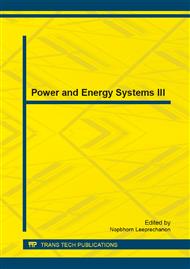p.31
p.37
p.43
p.49
p.56
p.60
p.71
p.76
p.86
Stress State of Turbine Blade Root and Rim Considering Manufacturing Variations
Abstract:
Three-dimensional thermoelastic analysis on the fir-tree root and rim of the I-P cylinder’s first stage blade was performed in two cases of load condition: only centrifugal force and both centrifugal force and temperature load, and five different manufacturing variations were taken into account. The results show that: with high temperature, the stress level of root which is well-designed under room temperature increase obviously, and the load of the four root teeth is unevenly distributed. Moreover, manufacturing variation between contact surfaces lead to serious stress concentration and extremely high stress, and load distribution of the four root teeth is completely uneven. In addition, the influence of temperature on the stress distribution of blade root and rim is much different with different manufacturing variations.
Info:
Periodical:
Pages:
56-59
Citation:
Online since:
January 2014
Keywords:
Price:
Сopyright:
© 2014 Trans Tech Publications Ltd. All Rights Reserved
Share:
Citation:


